
Key Takeaways
- Hybrid bikes offer a comfortable upright riding position and are suited for many terrains.
- Differences in tire tread and suspension affect a hybrid bike's performance.
- Evaluating bike features is key to choosing the right one for your mountain biking needs.
Can hybrid bikes handle the rugged trails of mountain biking? To understand this, you need to explore their versatility and features.
Yes, a hybrid bike can be used for mountain biking, but with limitations. Ideal for light trails, its design isn't suited for rough, technical terrain. A mountain bike excels in durability and control on challenging tracks, offering better performance and safety for serious off-road adventures.
As an avid cyclist who's tackled both city streets and rugged mountain trails, I've tested the limits of various bikes. I assure you a hybrid bike can handle light off-road terrain. But for true mountain biking, nothing beats a dedicated mountain bike. It's not just about the ride, it's about safety and performance.
Can You Use A Hybrid Bike For Mountain Biking?
Using a hybrid bike for mountain biking is an intriguing concept for cyclists who desire versatility in their rides. Hybrid bikes, built for comfort and efficiency on various terrains, strike a balance between the nimbleness of road bikes and the robustness of mountain bikes. While their adaptability is a plus, it's crucial to evaluate if a hybrid bike can manage the demanding conditions of mountain bike trails.
The layout of a hybrid bike is typically characterized by an upright riding position, wider tires than a road bike, and a frame that's lighter than a mountain bike's. This makes them suitable for paved roads and light off-road trails.
However, when comparing a hybrid bike to a mountain bike, there are distinctions in tire tread, suspension, and durability—factors that affect capability and safety on rougher, more uneven terrain. Understanding these differences is key when determining the appropriateness of a hybrid bike for your particular style of mountain biking.
The goal is to help you decide whether using a hybrid bike for mountain biking is a viable option.
Assessing Terrain and Comfort Considerations
Hybrid bikes are designed to perform well on various surfaces like paved roads, gravel paths, and light dirt trails. On the other hand, mountain bikes are specifically built to handle rough and uneven terrain with ease. If your riding preference includes challenging trails and steep climbs, a mountain bike is more suitable.
In terms of comfort, a hybrid bike generally offers an upright riding position, making it ideal for casual riders. Mountain bikes often have a more aggressive riding position, catering to the demands of off-road terrain.
Below, we highlight some of the key differences in comfort and terrain-related aspects of both hybrid and mountain bikes:
Frame and Suspension Analysis
The frame of a hybrid bike is lightweight and aerodynamic, borrowing elements from road bikes. However, mountain bikes have more robust frames designed to handle the impacts of off-road riding. The more durable frame of a mountain bike often results in a heavier overall weight.
Suspension is another crucial difference, as most mountain bikes feature suspension systems with a suspension fork in the front and rear suspension in the back. These features help in absorbing the shocks of uneven terrain, ensuring a smoother ride.
Hybrid bikes usually come with front suspension only or no suspension at all, making them less equipped to handle rough off-road trails.
Understanding Tires and Off-Road Capabilities
Tires play a significant role in determining a bike's off-road capabilities. Mountain bike tires have aggressive tread patterns for better traction and durability on uneven terrain, whereas road bike tires are smoother and suited for paved roads.
Hybrid bikes typically come with lightly treaded tires that can comfortably navigate gravel paths, dirt roads, and mild off-road terrain. However, if you plan to take your hybrid bike on more challenging trails or singletrack, it might be necessary to upgrade to knobby tires for better traction.
A wide-ranging rear cassette and adequate gear range are also essential for handling steep climbs and bumpy terrain on mountain bike trails.
Here’s a table with a comparison of key features between mountain and hybrid bikes:
How Can You Make Your Hybrid Bike Suited for Off-Road Trips?
If you're considering using your hybrid bike for mountain biking, there are a few modifications you can make to enhance its off-road capabilities. In this section, we'll discuss some tips on improving traction and stability as well as upgrading suspensions and tires for a more comfortable and enjoyable off-road riding experience.
Enhancing Traction and Stability
Hybrid bikes are generally designed for smoother and more even terrain, so enhancing their traction and stability is crucial for off-road use.
Here are a few ways to achieve this:
- Wider tires: Swapping out your stock tires for wider ones with more aggressive tread patterns can greatly improve traction on rough terrain. Wider tires also provide better stability during steep climbs and challenging trails.
- Tire pressure: Adjusting tire pressure can also have a significant impact on traction. Lowering the tire pressure slightly will increase the contact area between the tire and the ground, improving traction on rough trails and dirt roads.
Upgrading Suspensions and Tires
Another important aspect to consider when using a hybrid bike for mountain biking is the suspension. Most hybrid bikes come with a front suspension fork, but it may not be enough for serious trail riding.
Upgrading the suspension system can provide you with a more comfortable ride on uneven terrain.
- Suspension fork: Look for a suspension fork with more travel to absorb impacts better on rough trails. You may also consider a fork with adjustable preload settings, allowing you to fine-tune the suspension based on your riding style and trail conditions.
- Rear suspension: While not all hybrid bikes offer rear suspension, those that do can greatly benefit from an upgrade. A more capable rear suspension system will provide better damping and support on bumpy terrain.
- Tires: As mentioned earlier, wider tires with aggressive tread patterns are essential for off-road riding. Additionally, selecting a tire specifically designed for mountain biking or off-road use can significantly improve your bike's performance on unpredictable terrain.
Reasons Why Using a Hybrid Bike in Mountain Biking Is Not Ideal
In this section, we will discuss the limitations of using a hybrid bike for mountain biking, looking specifically at the aspects of suspension and tires as well as performance on technical trails.
Limitations in Suspension and Tires for Rugged Terrains
Utilizing a hybrid bike for mountain biking can present several challenges, especially when venturing onto rugged off-road terrains. One of the main limitations is the suspension system. Most hybrid bikes are designed with a limited suspension setup compared to high-end mountain bikes.
In addition to suspension limitations, the tires on hybrid bikes are often not suitable for off-road use. Mountain bike tires are designed with aggressive treads for better grip on uneven surfaces and in various trail conditions.
On the other hand, hybrid bike tires are usually smoother and more lightly treaded, designed for paved roads and light gravel paths. Consequently, these tires may not provide enough traction or durability for challenging off-road trails.
Reduced Performance on Technical Trails
Mountain biking often involves navigating technical trails with various obstacles, steep climbs, and challenging sections. In these situations, a hybrid bike's frame design and weight may impede the rider's performance.
Unlike mountain bikes, which have sturdier frames engineered for off-road use, hybrid bikes feature a lightweight frame designed for both city roads and light trails. This design sacrifices the robustness and stability required for technical trails, thus compromising the rider's safety and control during intense off-road riding.
Furthermore, hybrid bikes often have a more upright riding position than mountain bikes, which can make it difficult for riders to shift their weight effectively on steep climbs and descents. This riding position may also limit the rider's ability to maneuver their bike efficiently through challenging terrain.
Key Differences Between Mountain Bikes and Hybrid Bikes
In this section, we will explore and compare the key differences between mountain bikes and hybrid bikes, focusing on their frame and gearing systems as well as their tires and brake systems.
Comparing Frames and Gearing Systems
When it comes to frame geometry, mountain bikes are built with a more aggressive frame design that prioritizes durability and performance for off-road riding. In contrast, hybrid bikes have a more upright riding position, making them more suitable for casual riders and paved roads.
Most mountain bikes have a suspension fork to absorb shocks from uneven terrain, whereas hybrids generally feature a rigid fork for smoother paved surfaces and light trails. The gearing systems also vary between these two types of bikes.
Mountain bikes are made to tackle steep climbs and challenging trails, so they have a wide-ranging rear cassette with lower gears, making it easier to pedal uphill. Hybrid bikes, on the other hand, have higher gears that are more suitable for road riding and mild off-road terrain.
Analyzing Tires and Brake Systems
Mountain bikes are equipped with wider, knobby tires that provide excellent traction on dirt roads and rough trails. These tires are designed to handle rough terrain and provide more control during off-road cycling. Hybrid bikes typically have smooth tires that perform well on paved roads, gravel paths, and light dirt trails.
In terms of tire pressure, mountain bike tires are generally inflated to a lower pressure for better grip on uneven terrain. In comparison, hybrid tires maintain a higher pressure for faster rolling on paved surfaces.
Brake systems are another distinguishing factor between these two types of bikes. Mountain bikes commonly use hydraulic disc brakes or mechanical disc brakes for powerful and precise stopping capabilities during intense trail riding.
Rim brakes are more common on hybrid bikes, which provide ample stopping power for casual riding but may not be as responsive on challenging off-road trails.
The Unique Features of Hybrid Bikes
Hybrid bikes are versatile bicycles that combine the best features of road and mountain bikes. They are designed to be comfortable for commuting, recreational riding, or light off-road adventures. In this section, we'll discuss some of the unique characteristics that make hybrid bikes stand out.
The frame and weight of hybrid bikes are designed to provide riders with a comfortable, responsive ride, whether they're on paved roads or light trails. Hybrids tend to be lighter than most mountain bikes, allowing for improved maneuverability and less fatigue during longer rides.
When it comes to gears, hybrid bikes usually have a wide-ranging rear cassette that accommodates a variety of riding situations. It has a broader gear range than road bikes, allowing for easier climbs, but not quite as wide as mountain bikes, which are built for steep climbs and challenging trails.
Another distinct feature of hybrid bikes is their tire design. These bicycles typically have lightly treaded tires, which provide a balance of grip for light off-road use and low rolling resistance for efficient road riding. They are wider than road bike tires but narrower and less aggressive than mountain bike tires.
Hybrid bikes often come with front suspension, which helps absorb the impact of small bumps and uneven terrain. However, the suspension is usually not as advanced as on mountain bikes, making them less suitable for handling rough trails. Front suspension forks on hybrid bikes provide enough cushioning for casual off-road excursions and a more comfortable ride on paved surfaces.
The braking system on hybrid bikes is also a versatile feature, offering a choice between rim brakes and hydraulic disc brakes. Rim brakes are lighter and easier to maintain, while hydraulic disc brakes provide more stopping power and better modulation, especially in wet conditions.







































































































































































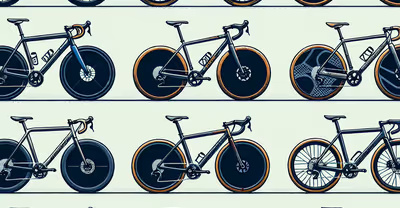


















































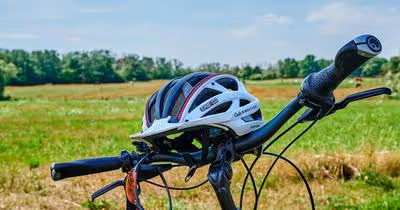

























































































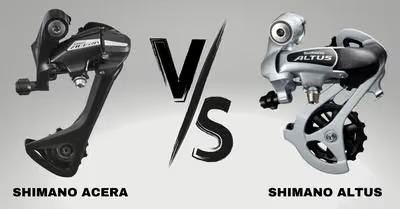






































































































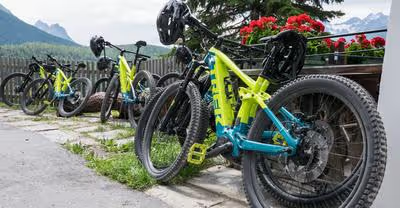

































































































































































































































































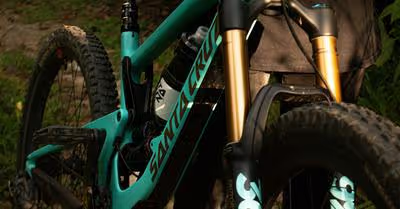
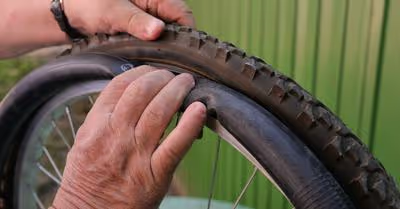

















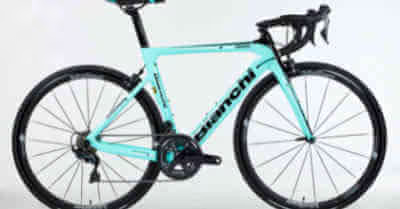



































.avif)
